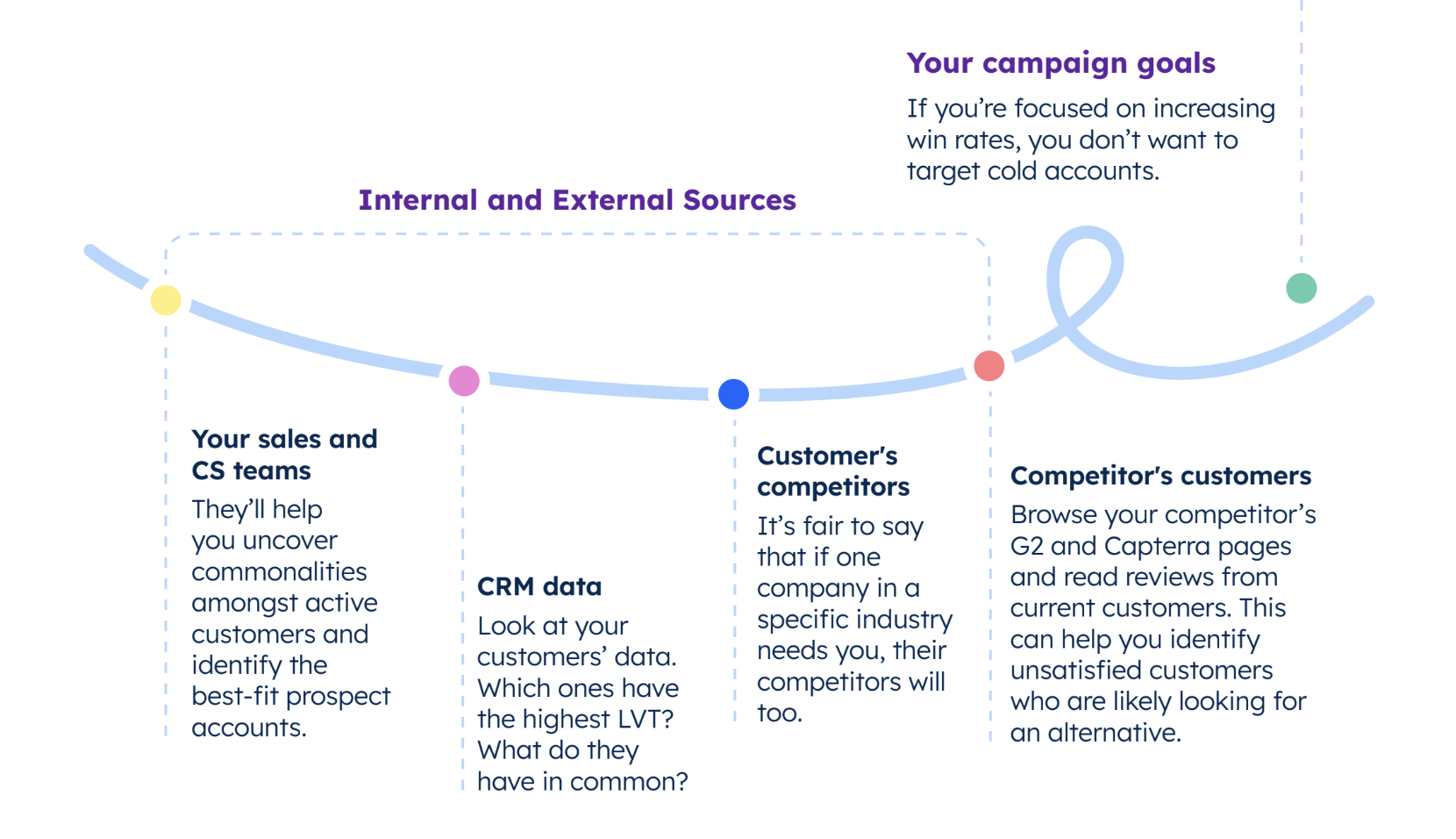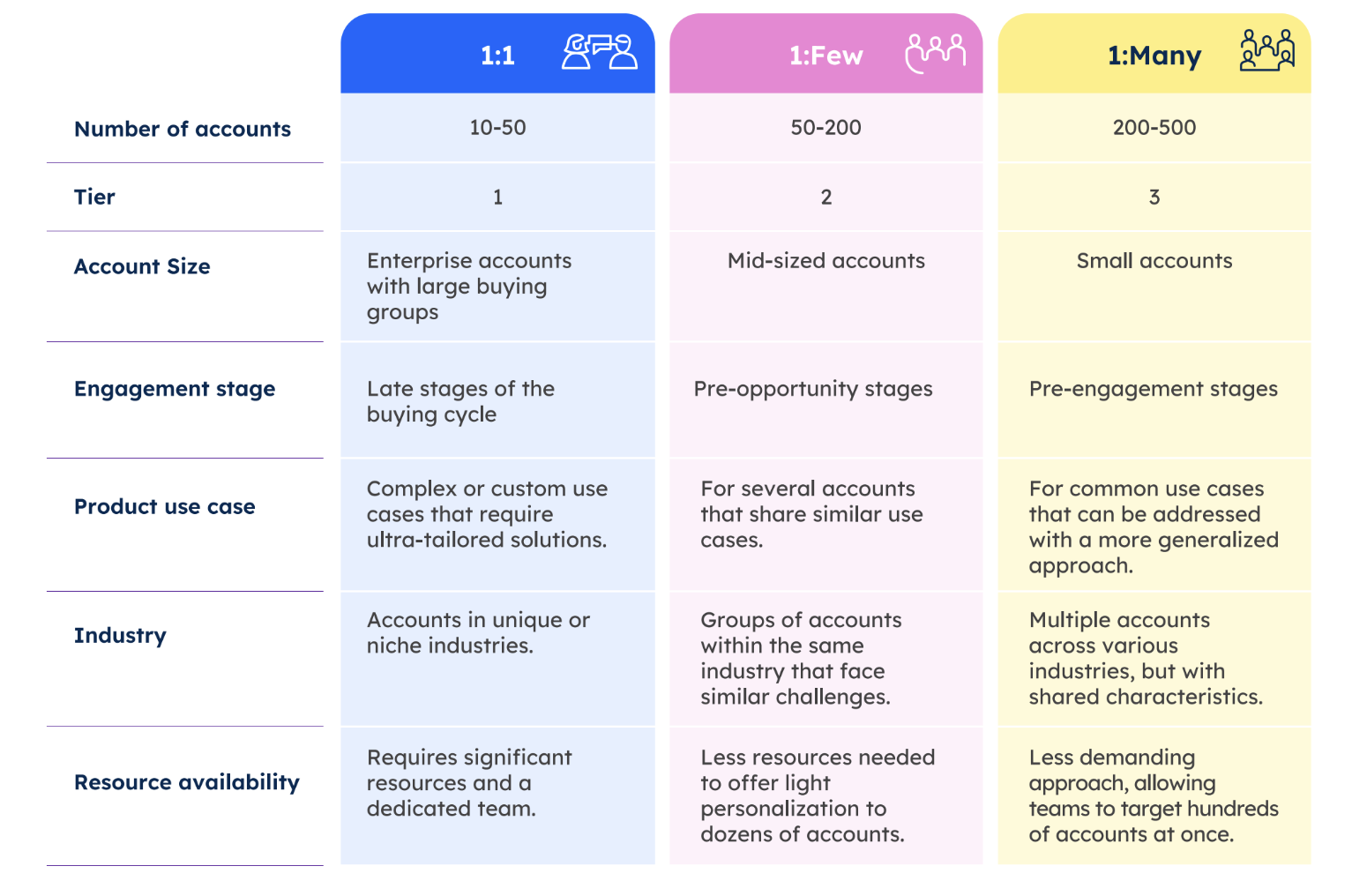How to fix a broken account-based marketing strategy
Let’s be clear: like anything worthwhile, ABM success doesn’t come easily. Even if your strategy feels broken, it’s never beyond repair. Simply gathering enough resources to dedicate to ABM efforts is a major challenge for 37% of marketers, so to get even one campaign off the ground is an achievement. Kudos!
From data management to cross-team collaboration, there are many moving parts at play and it can often take a few iterations to get ABM right. In this blog, we’ll look at the most common challenges ABMers face and show you how to overcome them!
What are the early indicators that an ABM strategy is not working?
a. Low engagement
When your selected target accounts are not engaging with your marketing efforts, it could be a sign something's off. You can access this by looking at event signups, clicks on your ABM ads, gift claims, email open rates, and personalized content consumption and interaction patterns.
b. Unaltered conversion rates
Have you compared your MQA (Marketing Qualified Account) conversion rate with pre-ABM efforts? If your post-ABM MQA conversion rate is not improving and you don't seem to be creating more MQAs within target accounts, you might need to optimize your strategy.
c. Stale deals
How are your key ABM accounts progressing through the sales stages? Is your team closing deals at a higher speed? If you answered "no", then it's time to shake things up.
The most common ABM challenges and how to fix them
Now that you’ve identified the symptoms, it’s time to find the causes and return your ABM strategy to health.
Challenge 1: Building Sales and Marketing alignment
Here at Reachdesk, one of our favorite things about ABM is how it hinges on seamless collaboration – between Sales and Marketing, but also across the entire go-to-market (GTM) team. Team alignment is one of the main pillars of allbound engagement, so it’s something particularly close to our hearts.
Studies show companies with healthy levels of alignment grow 19% faster and enjoy 15% more profitability, and if this is something you’re actively looking to improve, ABM is the perfect way to make it a priority.
But getting Sales and Marketing on the same page isn’t easy, especially when they have different perspectives, motivations, and expectations. According to research from LinkedIn, 90% of sales and marketing professionals believe their teams are misaligned across strategy, process, content, and culture.
How to fix it?
- Set expectations
Establishing shared targets, KPIs and processes is key to leveling up expectations and building a strong partnership from the get-go. So don’t forget to:
-
- Define qualification criteria for accounts to be included in campaigns
- Establish shared goals and KPIs that both teams are aware of
- Set SLAs, clear roles and responsibilities, and timeframes for actions
- Arrange touchpoints and communicate openly
Schedule regular meetings with your Sales team to share updates, performance data, and any new insights. Make sure your teams are working from the same dashboards and reports in your CRM platform.
- Flag engagement
Your team needs to be made aware of activity from their accounts, so they’re able to follow up and create a leaner buying process. To guarantee this happens, you should:
-
- Define clear engagement criteria
- Implement MQA scoring, so they know which accounts to prioritize
- Automate alerts that trigger when MQAs reach a predefined engagement score
- Agree on a MQA handoff process
2. Challenge 2: Defining accurate target lists
When executed correctly, ABM allows you to direct your team’s time, energy, and resources precisely where they need to be – generating pipeline, increasing efficiency, and maximizing ROI.
Of course, all this depends on the quality of your target account list. If it’s not up to standard, your chances of connecting with high-value accounts that have a genuine need for your solution will be significantly affected.
How to fix it?
- Align with your team
Alignment with Sales is crucial when you work on identifying the accounts your teams will target. You don't want your team to choose accounts at random, but you also don't want to dictate which ones they'll work on. So, to achieve alignment and consensus, instead of selecting accounts, Marketing should define criteria for accounts to be included in campaigns, and let Sales choose specific accounts that match said criteria. This guarantees that you target the right accounts, at the right stage, with the right messaging.
Your criteria can be based on:
- Tier your account list
Once you’ve defined guardrails and allowed your sales team to select accounts that match the defined criteria, you’ll be left with a strong list that’s not quite as targeted as you need. This is where tiering comes in.
You should bucket accounts into tiers, based on their attributes. Your highest priority tier will receive the most investment and attention, while your lowest priority one will get more general and automated outreach. This allows you to focus your efforts where they’re most needed.
Challenge 3: Creating relevant and engaging content
ABM thrives on personalized messaging and communications. Producing and sharing relevant content doesn’t just help you start conversations – it shows your target accounts that you understand the nuances of their industry and can be trusted to solve their biggest challenges.If your content strategy isn’t resonating with target accounts, then it probably isn’t addressing their problems or positioning your product as a long-term solution.
How to fix it?
Auditing your existing content will help you understand what kind of assets you already have and what topics they cover. Additionally, taking a closer look at your target audiences will help you access the types of content to use, pain points to focus on, etc.Once you do this, you’ll know exactly what your gaps are, what you need to do to fill them, the content you need to create, and the optimizations you need to make.
Remember, the type of content (and the level of personalization) you distribute across accounts should be determined by what stage of the funnel they're in and their tier, so make sure all content and communications are relevant.
Challenge 4: Telling the right success story
ABM strategies aren’t just complex to build, plan, and execute. They're also complex to measure. Proving the impact of an ABM strategy, that targets accounts with long sales cycles and leverages multiple touchpoints, without sourced attribution can be difficult.
However, to secure budget and engage the entire GTM leadership, you need to be able to tell a compelling ABM story.
How to fix it?
Highly personalized campaigns will usually require specific key performance indicators (KPIs), depending on their goals (e.g. customer retention vs net new revenue). But the following metrics are fairly universal and important to look for when measuring the success of any campaign…
- Customer Acquisition Cost (CAC): How much does it cost to acquire new customers?
- Account engagement: How are target accounts interacting with your marketing efforts? How many new website visits, content downloads, email opens, and event sign-ups?
- Pipeline velocity: How quickly are opportunities moving through the sales pipeline?
- Deal conversion rate: How many qualified opportunities eventually convert into paying customers?
- QA (Qualified Account) to opportunity conversion: How many qualified accounts have progressed to the opportunity stage (from the total number of qualified accounts)?
- Pipeline generated: How much pipeline opportunity can be directly attributed to your ABM campaign?
- Annual contract value (ACV): What is the average annual contract value for accounts targeted with ABM campaigns?
- Return on investment (ROI): What is the return on investment from your campaign? How much revenue is it generating?
Wrapping up
ABM is a juggling act with many different components that need your full attention. With some practice and tweaking, it can be hugely rewarding. In the meantime, it’s important not to feel discouraged when the initial results don’t immediately reflect the hard work you’ve put in.
Take a step back and look at the pillars of your ABM strategy. Make sure your target account lists are accurate, your sales and marketing teams are aligned, your content is relevant, and your success metrics are telling the full story. From there, you can put the pieces of your ABM strategy together into something better and stronger than what came before.
To learn more about how to take your ABM strategy to the next level, take a look at our direct mail-powered ABM guide!